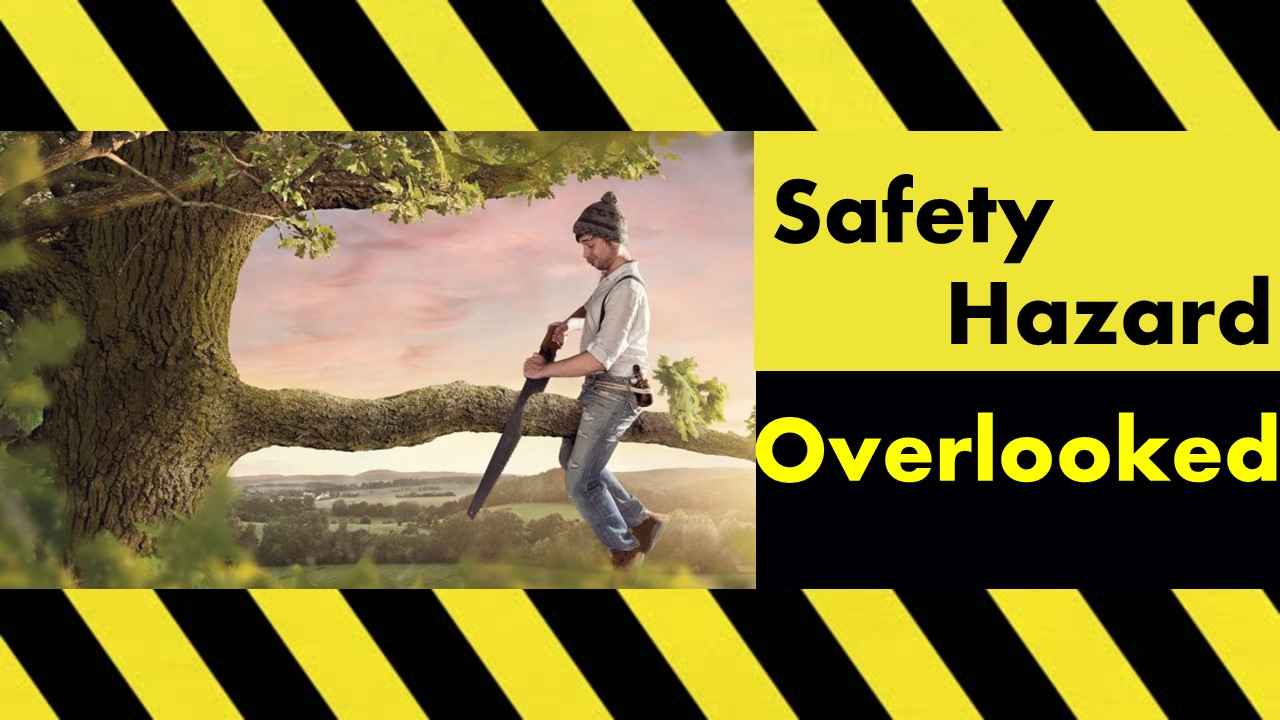Why We Often Overlook the Most Common Safety Hazards?
- By
- Pooja |
- February 14, 2024 |
- Civil Engineering, Risk and Safety,

Table of Contents
Familiarity Breeds Complacency
Example of familiarity breeds complacency:
Perception of High Risk but Low Likelihood:
Lack of Education and Awareness:
Casual Approach to Risk Mitigation:
In our busy lives, it's easy to miss the common safety hazards around us. We get so used to our surroundings that we might not even notice potential dangers. One reason for this is that our brains focus on immediate threats, overlooking things that seem routine. This can make us underestimate risks that are actually quite common in our daily lives.
Think about it: in familiar places like our homes or workplaces, we might not pay much attention to hazards because we're so used to them. Our brains trick us into thinking these places are always safe, even when there might be hidden dangers.
To stay safe, we need to be more aware of these everyday risks and take proactive steps to prevent accidents.
Familiarity Breeds Complacency
There's a saying that "familiarity breeds complacency," meaning we tend to get careless when we're too familiar with something. This happens a lot in places we're used to, like our homes or offices. Because we're so used to these places, we might not notice potential dangers. Our brains convince us that nothing bad can happen because we've been there so many times before.
But this false sense of security can lead to accidents. We need to be more alert and not take safety for granted, even in places we're familiar with.
Example of familiarity breeds complacency:
Imagine a person who has been driving the same route to work every day for years. They know the roads like the back of their hand and have never encountered any major problems. Over time, they start to feel so comfortable with the route that they become less attentive while driving.
Read More:
- Why Safety in Construction is Important?
-
What is Health and Safety Signs for Construction Site? 3 Important Points
One morning, while on their usual commute, they approach a busy intersection. Because they're so used to the routine, they don't pay as much attention to the traffic signals as they should. Without realizing it, they run a red light and narrowly avoid a collision with another car.
In this scenario, the driver's familiarity with the route led to complacency. They became so accustomed to the routine that they let their guard down and didn't follow proper safety measures. This lapse in attention could have resulted in a serious accident, highlighting the dangers of complacency bred by familiarity.
Perception of High Risk but Low Likelihood:
Sometimes, we underestimate risks just because they seem unlikely to happen. Our brains focus more on immediate threats, so we might ignore potential dangers that don't seem very probable.
This happens a lot in familiar settings where we've never had any problems before. We might skip safety measures because we think the risk is too low to worry about.
But even unlikely events can have serious consequences. That's why it's important to always be prepared and take precautions, no matter how unlikely we think a danger might be.
Being aware of everyday safety risks is crucial for staying safe. We need to overcome the tendency to get too comfortable and remember that even unlikely events can happen. By staying vigilant and taking proactive steps, we can protect ourselves and others from harm.
Routine Blindness:
Imagine going through your day on autopilot, doing the same things over and over again without really thinking about it. That's what routine blindness is all about. It's when we get so used to our daily routines that we stop paying attention to potential dangers around us.
Whether it's at work or at home, routine blindness can make us overlook safety hazards simply because we've done the same tasks so many times before. We might ignore safety procedures or fail to notice changes in our environment that could be risky.
To combat routine blindness, we need to snap out of autopilot mode and start paying attention to our surroundings. Regular safety training and reminders can help us stay alert and proactive, making our daily activities safer for everyone.
Lack of Education and Awareness:
Another reason routine blindness is a problem, because many people just aren't educated about safety matters. Without proper training and awareness, it's easy to miss potential dangers or safety protocols.
Whether it's in the workplace or in public spaces, a lack of education leaves us unprepared to recognize and address risks. Without awareness campaigns, we might not even realize the importance of staying informed about safety rules.
To fix this, we need better educational programs and widespread awareness campaigns. By giving people the knowledge and tools they need to identify and reduce risks, we can create a safer and more informed community.
Casual Approach to Risk Mitigation:
Sometimes, we take a casual approach to safety because we don't fully understand the risks or we think they're not a big deal. We might ignore safety measures because they seem inconvenient or unnecessary.
This relaxed attitude can be dangerous, especially when it leads us to overlook potential risks just because nothing bad has happened before. We need to shift our mindset and prioritize safety over convenience.
By promoting a proactive attitude towards safety and emphasizing the importance of taking precautions, we can create a safer environment for everyone. It's all about recognizing the risks and taking action to prevent accidents before they happen.
Please feel free to like, share and comment.
Admin, gcelab.com Please see our Pillar Post to know why we founded gcelab.com.
Read More:
- Building Roads with Safety in Mind
-
International Fire Safety Regulations for High-Rise Buildings
-
What is Health and Safety Signs for Construction Site? 3 Important Points

Pooja
Founder at gcelab.com, Pooja is an Entrepreneur unlocking human potential. Working in the Principles of Lean Start-up, Pooja believes in Transparency and User Happiness the most. Pooja’s background in teaching gives her a sophisticated grasp on even the most tedious aspect of course building. She is passionate about people who believe that good is not enough.


